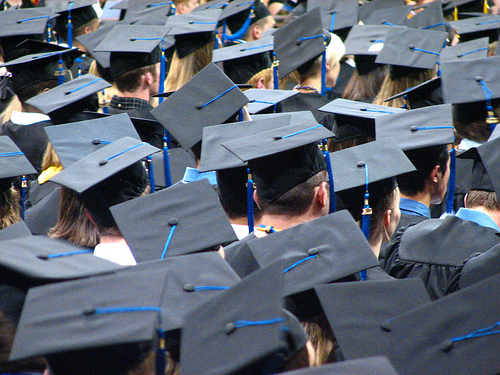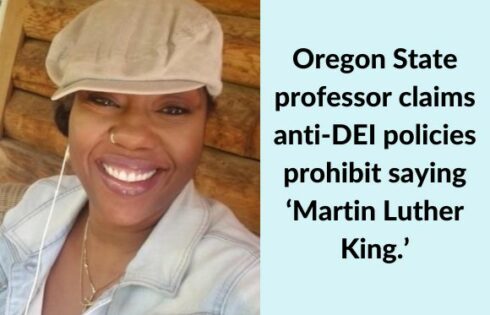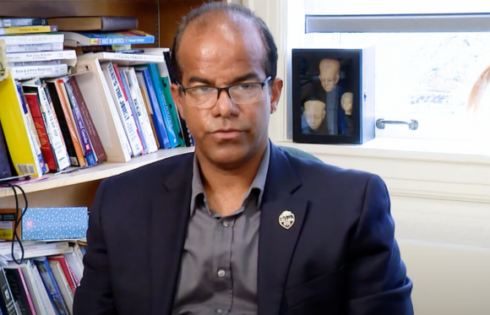
Massive student-loan debt. Ballooning tuition costs. Ever-expanding campus bureaucracies. A priority on diversity and tolerance at the expense of academics. Extreme and unapologetic liberal bias.
The state of higher education is bleak, says David Wilezol, associate producer of Bill Bennett’s nationally syndicated radio show “Morning in America” and co-author of the new book “Is College Worth It?”
So is college worth it? The answer to that is – it depends, Wilezol said during a recent Family Research Council lecture in Washington, D.C.
“The thesis is not: Don’t go to college,” Wilezol said. “College can be very much worth it for a lot of individuals. It largely depends on your academic ability that allows you to graduate, how much debt you have, where you go to school, and what you study.”
Wilezol noted that the Brookings Institution, a liberal think tank, came to the same conclusion.
“The state of higher education today is kind of grim,” Wilezol said. “There is a consensus developing among policy makers that college is not the right thing to do for everybody, at least not right out of high school.”
One of the biggest concerns prospective college students face is the massive amount of debt they will incur, he said.
A new report from Congress showed that in six years, student debt has doubled, from $550 billion in late 2007 to just under $1 trillion this year. A recent survey by Wells Fargo found one-third of Millennials regret going to college and feel they would have been better off working. A Wall Street Journal article published this month found student loan debt is crippling the economy.
College’s price tag has also ballooned 111 percent since 1973. Wilezol attributed the increase to the GI Bill in World War II, the Great Society programs that launched student loans, and the transition from a manufacturing economy to a knowledge-based economy in the ‘70s and ‘80s.
“Schools know they have a money spigot to raise the price higher and higher,” he said, adding a lot of that money is used to hire unnecessary staff.
“They hire a whole lot of staff unessential to the education mission,” Wilezol said. “A lot of sinecure positions in residence life, in diversity, in compliance, in academic affairs, in sustainability, and so on and so forth. Every college has a big bureaucracy these days to manage all kinds of different programs, a lot of which has little to do with what occurs inside class.”
He cited a statistic that found universities have grown peripheral staff by 39 percent, while education-related hirings have increased by only 18 percent between 1993 and 2007.
“Colleges are hiring a lot of people that, I don’t know that they need to be there, and that’s pushing up the bottom line and those costs are passed on to parents and students,” he said.
Wilezol noted, for example, that UC Berkeley paid $194,000 for a vice chancellor of equity and inclusion in the face of ongoing overall budget cuts in the UC system. Wilezol also cited UC San Diego’s hiring of administrators for diversity programs while at the same time it axed two star cancer researchers.
Adding to the problem is students aren’t learning as much in college as they used to, he said.
“What you’re seeing is that the university now (emphasizes) the social element,” Wilezol said. “In its original conception, which was the best conception, people were there to learn things, not to hang out.”
Wilezol cited a statistic that said that 45 percent of college students have no increase in critical thinking and comprehension after three years of college, and that the amount of studying per week is thirteen hours rather than twenty-five.
The website RateMyProfessors.com has partly contributed to this because students go on to the site, find the easiest professors and take those educators’ classes. Students then give the professor good ratings and the university rewards the professor, Wilezol said.
Underscoring all that, universities have an unabashedly liberal bias, he said.
Wilezol noted that surveys show UCLA’s History Department has a 53 to 3 ratio of liberal professors to conservative professors. UC Berkeley has a ratio of 28 to 2 liberal professors to conservative professors.
“There needs to be academic fairness,” Wilezol said.
One example of liberal bias on campus that Wilezol brought up was a discovery wheel used on campus to get students to say America is an intolerant society.
“There is a stream of anti-Americanism on campus,” Wilezol said.
The result of this liberal indoctrination is that some surveys show 48 percent of college students favor socialism while 46 percent of college students favor capitalism, Wilezol said.
Alternatives to college Wilezol touted included online education, community colleges, vocational studies, and in some cases not going at all.
Wilezol said it was possible to be successful in the real world without a college education, that 15 percent of today’s workforce does not have a college degree. Take Edward Snowden, a high-school dropout who had a cushy government job with a six-figure salary. Fifteen percent of Google’s workforce does not have a college degree, he added.
“American higher ed is still the envy of the world,” Wilezol said. “I hope we can reform it and make it even better.”
Fix contributor Aaron Bandler is a student at Cal Poly San Luis Obispo.
Click here to Like The College Fix on Facebook / Twitter: @CollegeFix
IMAGE: jeco/Flickr





Please join the conversation about our stories on Facebook, Twitter, Instagram, Reddit, MeWe, Rumble, Gab, Minds and Gettr.